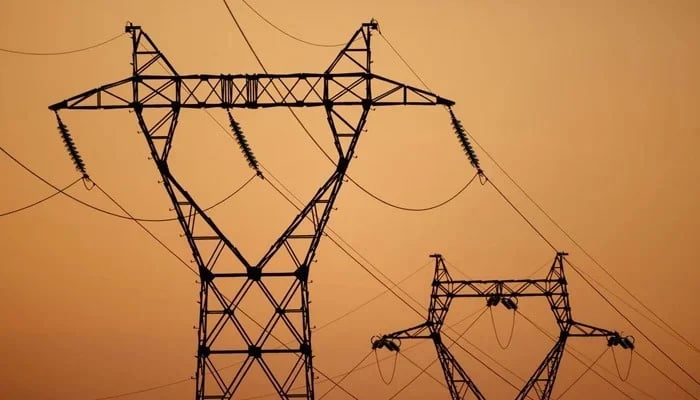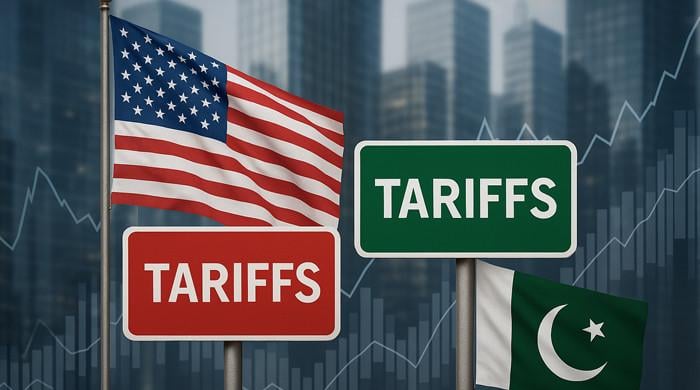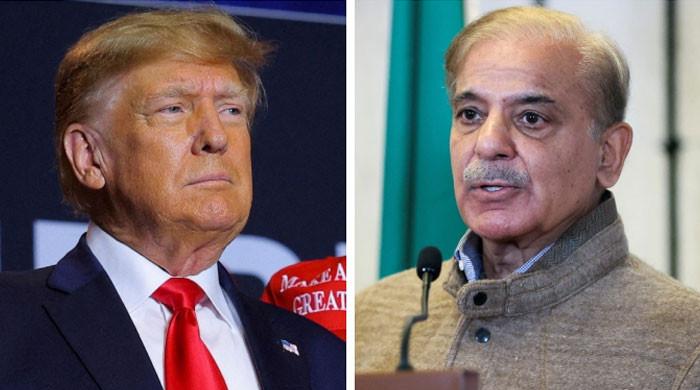Strategy revealed to address Rs2.4tr circular debt, revamp energy sector
Minister for Energy Leghari says govt working to reduce electricity costs and improve efficiency in power sector
April 05, 2025

- Got aims for competitive power market, cost-effective bidding system.
- Rs7.41/unit price cut covers taxes, benefits industrial, domestic users.
- Reforms include privatisation, regulatory oversight, debt reduction plans.
The government has revealed an extensive strategy aimed at tackling the Rs2.4 trillion circular debt and reforming the energy sector, which includes the privatisation of crucial power distribution firms and greater private sector participation in electricity procurement.
Federal Minister for Energy Awais Ahmed Khan Leghari, while briefing media persons on Friday, emphasised that the government was working to reduce electricity costs and improve efficiency in the power sector through these structural reforms.
“We aim to create a competitive market where power procurement is based on least-cost principles,” Leghari said, stressing that future power projects would be awarded through cost-effective bidding.
The government’s recently announced cut in electricity charges by Rs7.41 per unit is inclusive of taxes, and without taxes, the actual cut stands at Rs5.98 per unit. Interestingly, it comprises of adjustments through Quarterly Tariff Adjustments (QTAs), Fuel Cost Adjustments (FCAs), and subsidies, mostly derived from negotiations with three-dozen IPPs, the minister clarified. The cut for industrial sector is Rs7.69 per unit (inclusive of taxes).
He called for amendments to the National Electrical Power Regulatory Authority (Nepra) Act to strengthen regulatory oversight and hinted at efforts to convert imported coal power plants, including those under CPEC, to local coal to cut the import bill and lower power generation costs.
He said, “We working on it and will finalise a bankable document by June 2025. The government is also in talks with the Chinese companies for the debt reprofiling, he added.
The move aims to alleviate financial burden on consumers while addressing the growing Rs2.4 trillion circular debt in Pakistan’s power sector. Additionally, domestic users consuming up to 200 units per month will benefit from almost 50% reduction in their electricity bills under new measures designed to assist lower-income households.
Leghari said negotiations with 36 independent power producers (IPPs) have concluded, projecting a total saving of Rs3.696 trillion over the lifespan of their contracts (3 to 25 years). “If any power producers decline to cooperate, the government would pursue arbitration or initiate forensic audits — one of which is already in progress.”
He underscored that non-competitive power generation, high generation costs, inefficient distribution, and theft were among the key drivers of the growing circular debt, which currently stood at Rs2.4 trillion.
Exchange rate fluctuations and weak regulatory oversight are further straining the sector. To address the circular debt issue, talks with commercial banks are underway.
The Debt Servicing Surcharge (DSS) of Rs3.23 per unit on electricity consumer will continue. For retiring the principal debt, the government will finalise a term sheet with banks to eliminate the debt in next five to six years. Notably, the government plans to borrow Rs1.25 trillion from banks.
Leghari said: “This year, we will want to bring addition to debt stock to zero.”
Meanwhile, transmission upgrades are also on the cards, with potential financing from the Asian Development Bank and the World Bank over the next two to three years. Fixing grid bottlenecks could lower electricity prices by another Rs2 per unit, Leghari noted.
To cope with these issues, the government plans to privatise several power sector entities, beginning with Islamabad Electric Supply Company (IESCO), Gujranwala Electric Power Company (Gepco), and Faisalabad Electric Supply Company (Fesco).
In the next phase, Lahore (Lesco), Sukkur (Sepco), and Multan (Mepco) electric companies will follow.
Apart from this, government is working on the automation of 40 million electric meters countrywide. The blueprint of the plan will be completed in June. “We will encourage private sector to come forward and invest and complete the conversion in 3 to 4 years.”
Besides, to open up the market, Leghari said the Central Power Purchasing Agency (CPPA) will no longer be the sole buyer of electricity, as the government seeks to involve private players in both the buying and selling of power. “Electricity procurement will be based on least-cost principles and competitive bidding,” he added.
The energy minister said the government is converting agricultural tube wells in Balochistan to solar energy at a cost of Rs55 billion and entering service agreements with captive industrial units for uninterrupted supply.
The long-awaited Indicative Generation Capacity Expansion Plan (IGCEP) is nearing completion and will be presented to the prime minister within two weeks, he said.











